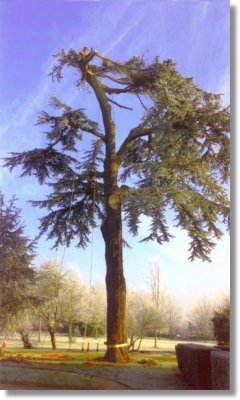
tree care specialist warwickshire
tree care specialist warwickshire
tree care specialist warwickshire surgery, arborist, stratford upon avon, warwickshire, worcestershire, cotswolds, arboriculture, tree care specialist warwickshire surgery, work, insured, professional, specialist, pruning, felling, care, hedge, thinning, lifting, stump, quote
Trees in urban landscape settings are often subject to disturbances, whether human or natural, both above and below ground. They may require care to improve their chances of survival following damage from either biotic or abiotic causes. Arborists can provide appropriate solutions, such as pruning trees for health and good structure, for aesthetic reasons, and to permit people to walk under them (a technique often referred to as "crown raising"), or to keep them away from wires, fences and buildings (a technique referred to as "crown reduction"). Timing and methods of treatment depend on the species of tree and the purpose of the work. To determine the best practices, a thorough knowledge of local species and environments is essential.
There can be a vast difference between the techniques and practices of professional arborists and those of inadequately trained tree workers who simply "trim trees". Some commonly offered "services" are considered unacceptable by modern arboricultural standards and may seriously damage, disfigure, weaken, or even kill trees. One such example is tree topping, lopping, or "hat-racking", where entire tops of trees or main stems are removed, generally by cross-cutting the main stem(s) or leaders, leaving large unsightly stubs. Trees that manage to survive such treatment are left prone to a spectrum of detrimental effects, including vigorous but weakly-attached regrowth, pest susceptibility, pathogen intrusion, and internal decay.
Pruning should only be done with a specific purpose in mind. Every cut is a wound, and every leaf lost is removal of some photosynthetic potential. Proper pruning can be helpful in many ways, but should always be done with the minimum amount of live tissue removed.
In recent years, research has proven that wound dressings such as paint, tar or other coverings are unnecessary and may harm trees. The coverings may encourage growth of decay-causing fungi. Proper pruning, by cutting through branches at the right location, can do more to limit decay than wound dressing.
Chemicals can be applied to trees for insect or disease control through spraying, soil application, stem injections or spraying. Compacted or disturbed soils can be improved in various ways.
Arborists can also assess trees to determine the health, structure, safety or feasibility within a landscape and in proximity to humans. Modern arboriculture has progressed in technology and sophistication from practices of the past. Many current practices are based on knowledge gained through recent research, including that of the late Alex Shigo, considered one "fathers" of modern arboriculture.
Depending on the jurisdiction, there may be a number of legal issues surrounding the practices of arborists, including boundary issues, public safety issues, "heritage" trees of community value; and "neighbour" issues such as ownership, obstruction of views, impacts of roots crossing boundaries, nuisance problems, disease or insect quarantines, and safety of nearby trees.
Arborists are frequently consulted to establish the factual basis of disputes involving trees, or by private property owners seeking to avoid legal liability through the duty of care.Arborists may be asked to assess the value of a tree in the process of an insurance claim for trees damaged or destroyed, or to recover damages resulting from tree theft or vandalism. In cities with tree preservation orders an arborist's evaluation of tree hazard may be required before a property owner may remove a tree, or to assure the protection of trees in development plans and during construction operations. Homeowners who have entered into contracts with a homeowner's association (see also Restrictive covenants) may need an arborist's professional opinion of a hazardous condition prior to removing a tree, or may be obligated to assure the protection of the views of neighboring properties prior to planting a tree or in the course of pruning. Arborists may be consulted in forensic investigations where the evidence of a crime can be determined within the growth rings of a tree, for example. Arborists may be engaged by one member of a dispute in order to identify factual information about trees useful to that member of the dispute, or they can be engaged as an expert witness providing unbiased scientific knowledge in a court case. Homeowners associations seeking to write restrictive covenants, or legislative bodies seeking to write laws involving trees, may seek the counsel of arborists in order to avoid future difficulties.